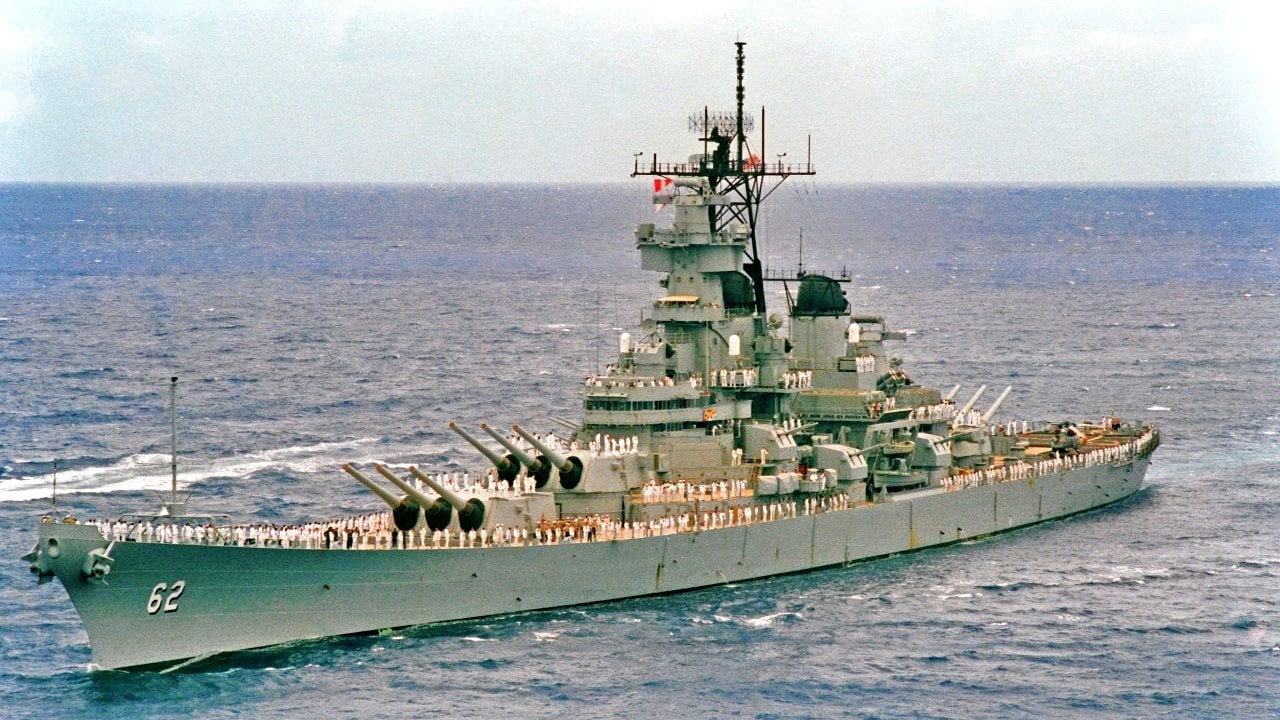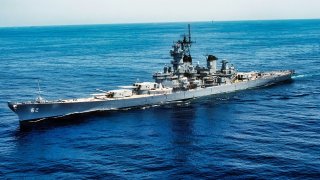The Navy's Montana-Class Battleship Can Be Explained In 2 Words
The cancellation of the Montana-class battleships during World War II was not a missed opportunity but a wise decision by the U.S. Navy. Although these ships were designed to be the largest, most heavily armored battleships ever built, they lacked the speed to keep up with aircraft carriers and couldn't fit through the Panama Canal.
What You Need to Know: The cancellation of the Montana-class battleships during World War II was not a missed opportunity but a wise decision by the U.S. Navy. Although these ships were designed to be the largest, most heavily armored battleships ever built, they lacked the speed to keep up with aircraft carriers and couldn't fit through the Panama Canal.

Bottomline: The vulnerability of large battleships to air attacks, demonstrated by the sinking of HMS Prince of Wales and Japan’s Yamato, made these warships obsolete in modern naval warfare. Instead, the focus on aircraft carriers proved essential in winning the war in the Pacific.
Two Word Explanation: Totally Obsolete.
Montana-class Battleships – Missed Opportunity? More Like Dodging a Bullet
Have you seen the size of today's SUVs?
You're not imagining it if you think that some of those behemoths look bigger than the Canyonero sport utility vehicle driven by Marge Simpson! As described in an episode of the popular animated TV series, the entirely fictional vehicle is "12 yards long, 2 lanes wide, 65 tons of American Pride!"
Though no actual SUV is quite as large as the cartoon vehicle, there is no denying that Americans have been sold on "bigger is better."
That fact could help explain why some armchair admirals can't stop bemoaning that the U.S. Navy's Montana-class battleship program was somehow a "missed opportunity."
Biggest Battleships (Almost) Ever Built for the U.S. Navy
Plans for supersized battleships began in the 1930s after it came to light that Japan had undertaken a project to build a "super-battleship." The U.S. Navy sprung into action – or more aptly was caught in a "reaction." It was already engaged with the excellent Iowa-class fast battleships, but naval planners were apparently driven by the mantra "go big or go home."
"The five battleships of the Montana class, authorized under the 1940 'Two Ocean Navy' building program and funded in Fiscal Year 1941, were the last of their kind ordered by the U.S. Navy. With an intended standard displacement of 60,500 tons, they were nearly a third larger than the preceding Iowa class, four of which were the final battleships actually completed by the United States," the Naval History and Heritage Command outlined in a study.
Originally, the U.S. Navy even considered 18-inch (457mm) guns for the main armament. However, that was scaled back to a dozen 16-inch .50 caliber guns, but the number of guns was also three more than on the Iowa class. It was anticipated that the 16-inch (406m) guns could fire a project more than 42,000 yards (38.5 km) over the horizon.
"Protection against underwater weapons and shellfire was also greatly enhanced. They would have been the only new World War II era U.S. battleships to be adequately armored against guns of the same power as their own," the command added.
In total, the armor weight could have amounted to approximately 21,000 tons, with an outer belt extending from the armor deck to the bulged hull and an internal belt descending from the middle deck to the bottom and constituting an anti-torpedo bulkhead.
Yet that would have come at a serious cost.
"To achieve these advances, the Montana class was designed for a slower maximum speed than the very fast Iowas and had a beam too wide to pass through the existing Panama Canal locks," the Naval History and Heritage Command also noted.
Missed Opportunity? Hardly!
It is all too common for some history buffs, and even naval experts, to suggest that canceling the Montana class was a mistake. Perhaps they're just upset that the United States Navy can't claim to have operated the largest battleship ever built. The sea service can claim that it operates the largest warship ever built with the Gerald R. Ford class of nuclear-powered aircraft carriers – but given that no vessel is unsinkable, perhaps bigger isn't always better.
The aforementioned Iowa-class battle wagons were built to not only pass through the Panama Canal – allowing them to easily operate in both the Atlantic and Pacific Oceans – but they were fast enough to keep up with a carrier. The Montana class couldn't do that, at least not without slowing down the carriers it was meant to protect.
That fact can't be understated.
The Royal Navy's King George V-class battleship HMS Prince of Wales revealed just days after the attack on Pearl Harbor how easily a modern capital ship could be sunk by combat aircraft.

Even with its heavy armor, the Montana class would have been as vulnerable. We need only remember that the Imperial Japanese Navy's Yamato and her sister ships were sent to the bottom of the ocean during World War II. Meanwhile, you can walk the decks of the four Iowa-class battleships, which have been preserved as museum ships.
No, canceling the Montana class wasn't a missed opportunity.
In reality, the U.S. Navy dodged a bullet. Those warships wouldn't have been suited for a conflict in the Cold War, and at best today we'd just have a larger floating museum or two somewhere. At worst, we wouldn't have built the carriers that were truly needed to win the war and bring victory in the Pacific. It needs to be remembered that the U.S. may have been the "Arsenal of Democracy" but it didn't have unlimited resources, materials or personnel. Building even one of these ships would have meant something else wasn't built.
Our choices worked out, and it is simple unimaginable that these warships would have shortened the war in the least.
Author Experience and Expertise: Peter Suciu
Peter Suciu is a Michigan-based writer. He has contributed to more than four dozen magazines, newspapers, and websites with over 3,200 published pieces over a twenty-year career in journalism. He regularly writes about military hardware, firearms history, cybersecurity, politics, and international affairs. Peter is also a Contributing Writer for Forbes and Clearance Jobs. You can follow him on Twitter: @PeterSuciu. You can email the author: [email protected].
Image Credit: Creative Commons and/or Shutterstock.


